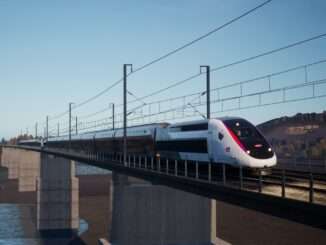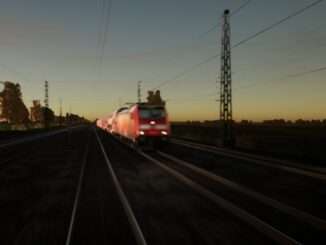
Here are the basic steps and tips for getting any train moving, helping you get familiar with the overall flow to cab setup and common procedures. For any train-specific information, including the location of driving controls, you can find this later on in the document. You can also play the tutorials for addtional training.
General Driving Practice
Сrеdit gоеs to !
Start Up
- Insert the Master Key if there is one.
- Ensure the Reverser is in Neutral.
- Ensure that the brakes are applied, you may need to cut them in first.
- Activate any safety systems as you desire throughout the cab, and complete any necessary self-tests.
- Set the external and internal lights as appropriate, such as instrument lights, headlights.
- If you are driving a passenger train, complete any passenger stop instructions as appropriate.
- Ensure the starting signal will allow you to proceed.
- Move the Reverser into the intended direction of travel.
- Release most of the brakes in preparation to move.
- Apply some power and release the rest of the brakes once generating traction.
Shut Down
- Once you have gently come to a stop, apply full brakes.
- Move the Reverser into the Neutral position.
- If you are driving a passenger train, complete any passenger stop instructions as appropriate.
- Set the external and internal lights as appropriate, such as tail or marker lights, cab lights.
- With brakes fully applied cut out the braking as appropriate.
- Deactivate any safety systems which were turned on at the start of the service.
- Remove the Master Key if there is one.
There are many intricacies to learn about every train and route in order to successfully drive them, but there are some pointers which can apply in almost all circumstances that put you in good stead for avoiding emergency stops, stalls and runaways!
Smooth Sailing – Safety and comfort should always be kept in mind when operating a train, so when possible it is always best to offer a smooth experience, no sudden jolts into full power or brakes.
Stay on Time – No one likes a late-running service, and apart from any pending disasters you should be able to stick to the schedule without too much trouble, as timings take train speeds and performance into account.
Be One Step Ahead – Trains do not stop quickly like cars do, so ensure you’re thinking about what’s next, be prepared to stop at the station in plenty of time, and give yourself the distance you need to obey signals.
It’s a Limit not a Target – It can be tempting to try to stick to the posted speeds as much as possible, and while in many circumstances that is fine, always be vigilant, for example if you crest the top of a hill at line speed, with the full momentum of a heavy freight train, by the time the rear starts pushing you will already be going too fast, and in some cases, the brakes then won’t be able to keep up.
Weight on Your Shoulders – Trains can be very heavy, and you must treat them as such when driving, too much power from a standstill can cause wheelslip, and this escalates with gradient and weather conditions.
Enjoy Learning – Don’t be afraid to make a mistake, you can always stop, reset and try again. Practice makes perfect, and celebrating failures is part of the experience.





Be the first to comment